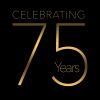Upcoming Exhibitions
Summer/Fall 2024 Exhibitions
OPENING JULY 27, 2024
Click here for details
February 8 to June 29, 2025 Exhibition Season
The Harmon and Harriet Kelley Collection of African-American Art: Works on Paper
Produced by Landau Traveling Exhibitions
PIXELS: Michael Azghour: Image as Mythology
PIXELS: MIchael Rohde
Tony Natsoulos
August 9, 2025 to January 11, 2026 Exhibition Season
Jo Hanson: Crab Orchard Cemetary
Stone Sculptures of Zimbabwe
Linda Lomahaftewa: Council of 100’s 2025 Distinguished Woman Artist
Eliana Saucedo: New Works

